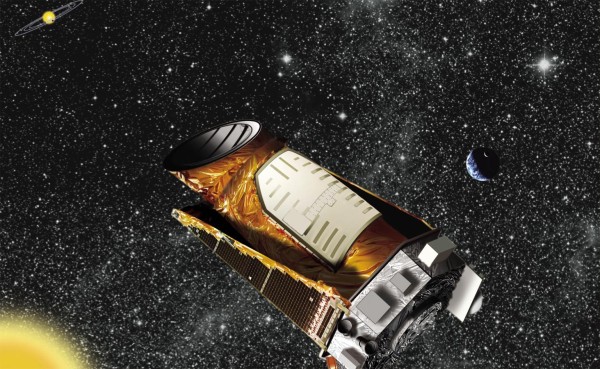All About the Kepler Telescope, Our Wounded Space Scout
- April 11, 2014
- By KIDS DISCOVER
What is the Kepler telescope?
It’s an instrument designed to find planets that might support the kind of life we have on Earth. On March 7, 2009, it was launched into an orbit slightly farther from the Sun than we are. That’s where it began its mission.
What was it sent into space to do?
Precisely pointed at one tiny sliver of our galaxy, Kepler’s 42 camera sensors constantly scanned the 100,000 or so stars in that window looking for tiny differences in the light they cast. A flicker in a star’s light could indicate an orbiting planet, which blocks a star’s light briefly as it passes.
What part of the sky was the Kepler instrument looking at?
It focused on the constellations Cygnus and Lyra, which lie ahead of us as our solar system orbits the galaxy. All the stars in that range are about as far from the center of the galaxy as we are.
Why isn’t the Kepler instrument on Earth?
Only in space could it achieve the kind of photometric precision it needed. The light and dark of our day-night cycles would interfere, as would weather and other seasonal disturbances.
So did Kepler find anything?
Yes! It identified three Earth-like planets orbiting in the habitable, or water-friendly, zones of their solar systems: not so close to their suns that they’re blazing hot (think Mercury) and not so far that they’re freezing (think Neptune). Overall, Kepler has found 151 planets and 3,548 possible planets so far.
Is the Kepler mission over?
Yes and no. Kepler completed its primary mission in November 2012. While scientists are still poring over the data it produced, they’re exploring what missions it might be used for now.
Why can’t it just keep going?
Kepler’s four reaction wheels functioned like gyroscopes to enable precision pointing, but two of them have stopped working. Rocket thrusters compensate, but without at least three working wheels, Kepler can’t do exactly what it was designed for.
Even so, NASA believes Kepler’s “most interesting discoveries are still to come.” The agency has issued an open call for what it terms “two-wheel science proposals”! And no, they’re not looking for exciting new bike tricks.



